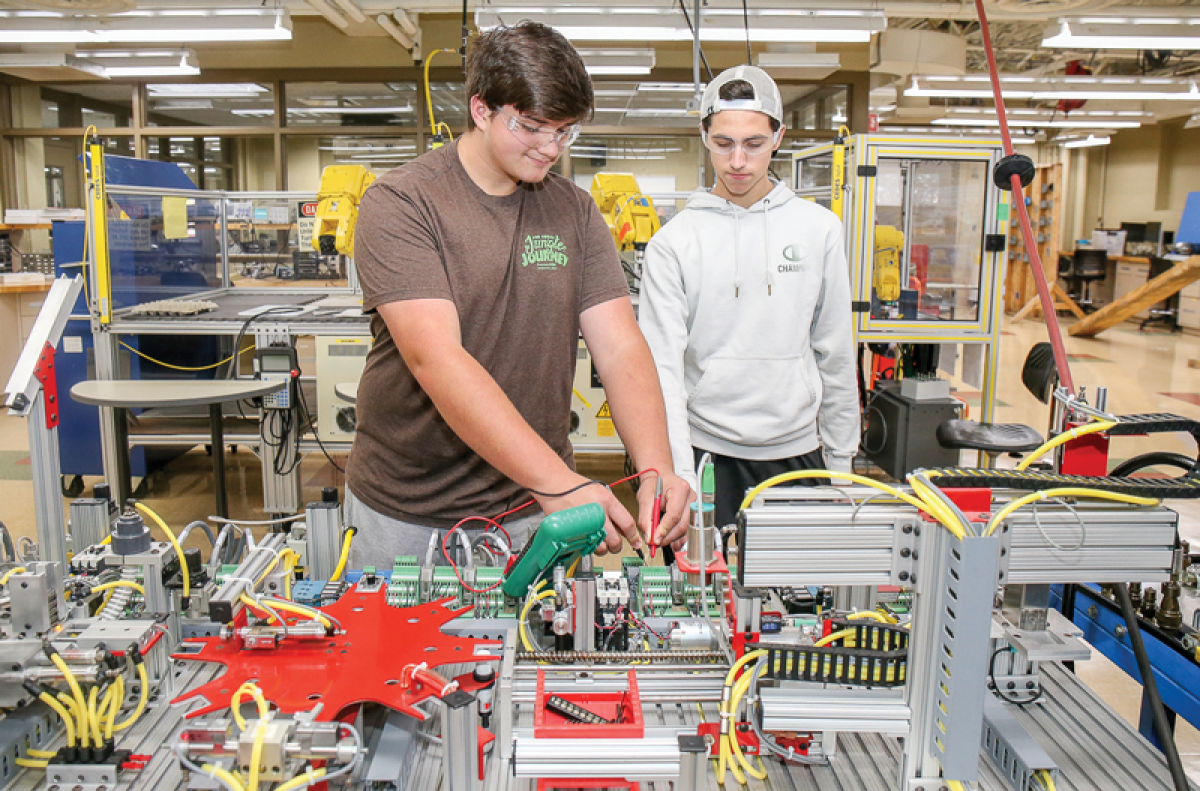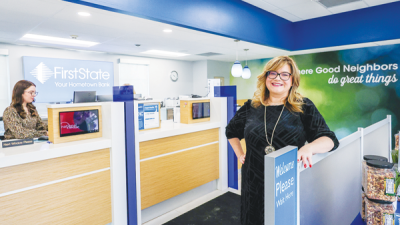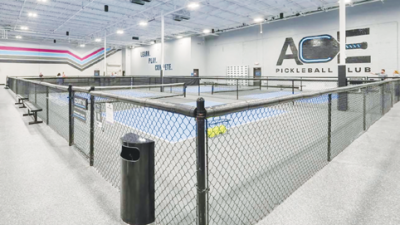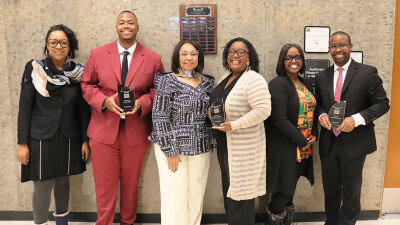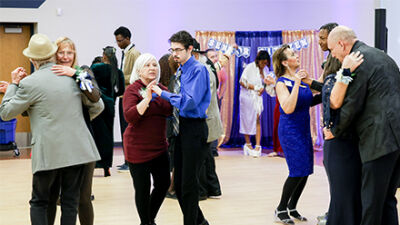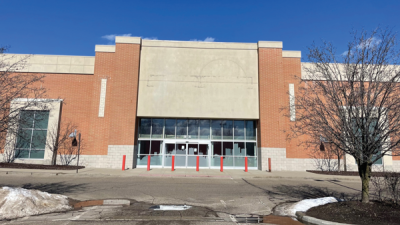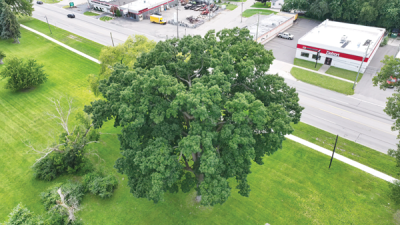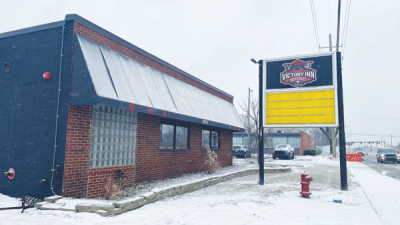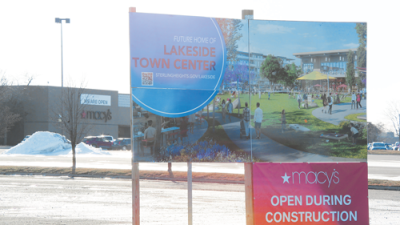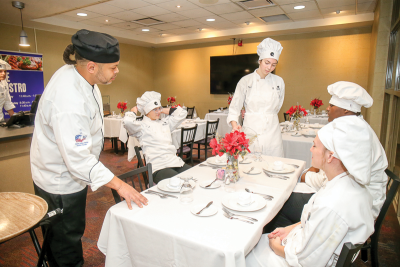
Chef Justin Howard goes over proper dining room service with students at Oakland Schools Technical Campuses - Northeast. The northeast campus, located in Pontiac, serves students who live in or attend schools in the Avondale, Lake Orion, Oxford, Pontiac and Rochester school districts.
Photo by Patricia O’Blenes
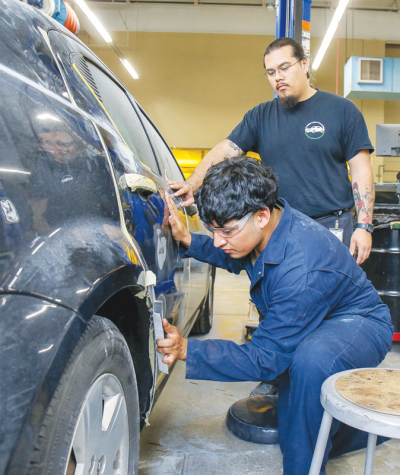
Antonio Acuna guides Avondale High School junior, Angel Mendoza through a dent repair in collision repair and refinishing course at Oakland Schools Technical Campuses-Northeast.
Photo by Patricia O’Blenes
METRO DETROIT — The rising cost of college, combined with growing demand for skilled workers, is driving more students to enroll in career and technical education programs, known as CTE programs.
The state projects more than 520,000 Michigan jobs and approximately 45,500 annual openings in the professional trades by 2030.
Amid skilled-labor shortages across the nation, many students are choosing CTE programs to explore a future career, get college credit, find an internship, and/or earn industry recognized certifications, all while fulfilling their high school graduation requirements.
At Oakland Schools Technical Campuses, high school students from the county’s 28 public school districts, public academies, private learning institutions and home schools can learn practical career technical education. Enrolled students spend part of their day studying at their home district and the remainder involved in one of several career clusters offered at one of four of the county’s technical campuses — Pontiac, Clarkston, Walled Lake and Royal Oak.
Across Michigan, many high schools and specialty programs offer CTE courses aligned with in-demand, high-wage careers in fields like business, information technology, health care, hospitality and manufacturing.
“Career and technical education is preparing students for high-wage, high-skill, high-demand jobs,” said Paul Galbenski, the dean of Oakland Schools Technical Campus Northeast in Pontiac.
OSTC offers a total of 17 state-approved CTE programs: — including agriscience and environmental technologies; automotive technology; collision repair and refinishing; computer programming; construction technology; cosmetology; criminal justice; culinary arts/hospitality; cybersecurity networking; energy-electrical technology; engineering, robotics and mechatronics; entrepreneurship and advanced marketing; graphic and communication design; health sciences; machining; medium/heavy truck and equipment; and welding.
The primary focus of OSTC’s program is for students to marry their technical and academic skills together, so they are career ready. Because being career-ready looks different for each student and their field of interest, there are many options.
“They can go into a pathway where they are working on our Oakland Technical Early College, where they could come out with an associate degree in their technical area. They could be in a pre-apprenticeship program. They could go directly into the workforce. They could go into the military. They could go into a speciality trade school. They could go to a two-year community college, or they could go to a four-year university. … All of those options are on the table,” he said.
Through internships, apprenticeships and day-in-the-life job shadowing, students learn what it’s like to work in their chosen fields — instead of spending thousands to figure it out in college.
“Students that attend a technical campus have what I like to phrase as a ‘force multiplier of opportunities’ because they are then in each of these programs, working toward and earning industry credentials,” Galbenski explained.
For example, students in the OSTC cosmetology program can earn a cosmetology state license, while those in the computer programming course can become certified in java, HTML, or CSS3. Students in OSTC’s health sciences program, can earn a certified nurse aide license or a patient care technician credential, and those interested in the construction field can earn an Occupational Safety and Health Administration 10 safety certification, to name a few.
And, according to Galbenski, it’s all for free at OSTC.
“Every one of these credentials is free. You want to talk about return on investment. … There are many opportunities for students to be successful and look at those careers and pursue those pathways,” he said.
Utica Community Schools offers a variety of CTE courses to high-schoolers in a number of areas, including everything from computer programming, cybersecurity and engineering to finance, radio and television broadcasting, and woodworking — to name a few. The district also features five high school specialty programs, including the Utica Center for Mathematics, Science and Technology; the Utica Academy for Health and Human Services; the Gene L. Klida Utica Academy for International Studies; the Stevenson Center for Manufacturing and Design Engineering; and the Utica Center for Science and Industry.
Scott Spry, an electronic technology and mechatronics instructor at the Utica Center for Science and Industry, said UCSI students have access to work-based learning opportunities, including job shadowing, mentoring and work-site internships. Students, he said, focus on the design thinking process and choose one of the three CTE pathways — multimedia production, mechatronics or engineering technology.
“We already know that the pipeline for career and technical education positions is very, very lean, so continuing to try to fill that pipeline from our level has been a priority for the last couple of years,” Spry explained.
At Utica Community Schools, Spry said, many of its CTE students have gone on to work in needed fields within the community.
The same is true for many of OTSC students — including former OSTC health sciences graduates, who have gone on fill vacant, in-demand doctor and dentist positions within Oakland County communities.
 Publication select ▼
Publication select ▼